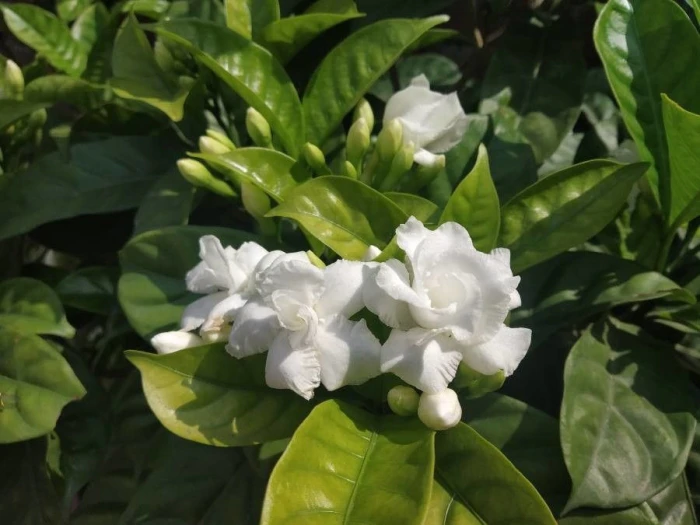Arabian Jasmine
(Jasminum sambac)
Arabian Jasmine (Jasminum sambac)
/
/

Jasmine V
CC BY-SA 4.0








































































Estimated Native Range
Climate Requirements for Passaic, New Jersey
| This Plant | Your Site | Plant Suitability for Your Location | ||
|---|---|---|---|---|
| • Precipitation | 2" - 182" | 49" | Aquatic | Aquatic |
| • High Temp. | 70°F - 110°F | 87°F | Your summer temperatures are normal for this plant. | Excellent |
| • Low Temp. | 3°F - 79°F | 22°F | Your winter temperatures are normal for this plant | Excellent |
Summary
Arabian Jasmine is highly valued for its intensely fragrant flowers, which are used in perfumes and to flavor tea. It is a popular ornamental plant in gardens and can be trained as a small shrub or vine. It is also used in lei making and for religious and ceremonial purposes. In cultivation, it requires protection from freezing temperatures and is often grown in greenhouses or conservatories in temperate regions. It prefers full sun to part shade, consistent moisture, and well-drained soils. Arabian Jasmine can be susceptible to pests such as aphids and scale insects.CC BY-SA 4.0
Plant Description
- Plant Type: Shrubs, Vines
- Height: 4-5 feet
- Width: 4-5 feet
- Growth Rate: Moderate
- Flower Color: White
- Flowering Season: Spring, Summer
- Leaf Retention: Evergreen
Growth Requirements
- Sun: Full Sun, Part Shade
- Water: Medium
- Drainage: Medium
Common Uses
Bee Garden, Bird Garden, Border Plant, Butterfly Garden, Deer Resistant, Drought Tolerant, Edible*Disclaimer: Easyscape's listed plant edibility is for informational use. Always verify the safety and proper identification of any plant before consumption., Fragrant, Hedges, Hummingbird Garden, Low Maintenance, Showy Flowers, Street Planting
Natural Habitat
Originates from the Indian subcontinent and Southeast Asia, thrives in tropical climates
Other Names
Common Names: Sambac Jasmine , Pikake , 茉莉
Scientific Names: Jasminum sambac , Nyctanthes sambac , Mogorium sambac , Jasminum sambac var. kerianum , Jasminum odoratum , Jasminum sambac var. heyneanum , Jasminum undulatum , Jasminum pubescens , Jasminum sambac var. nemocalyx , Jasminum sambac var. plenum
GBIF Accepted Name: Jasminum sambac (L.) Aiton